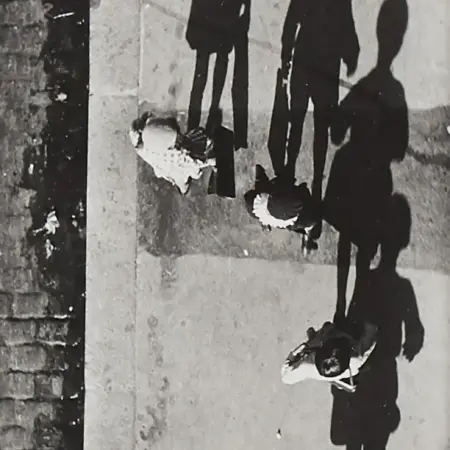
André Kertész
Hungarian Artist
1894-1985
Interested in selling a piece by André Kertész?
We have received top dollar for André Kertész works. Auction is the best way to quickly and transparently get maximum dollar for your artwork.
About André Kertész
André Kertész was a Hungarian photographer well known for his contributions to photojournalism, especially his authoritative photo essays.
Biography
Born as Andor Kertész in Budapest in, André Kertész belonged to a middle-class Jewish family. After his father’s death, André Kertész and his mother and two brothers moved to his uncle’s country property in Szigetbecse. Kertész grew up in a pastoral setting with a leisurely pace of life.
After completing his bachelor’s degree in 1912 from the Hungarian Academy of Commerce, Kertész worked as a clerk at the Budapest Stock Exchange, which provided him with enough resources to purchase his first ICA box camera.
Kertész taught himself to use a camera and took pictures of landscapes of the Hungarian Plains, gypsies, and local peasants. When he served in the Austro-Hungarian army during World War I, Kertész took photographs of his life on the frontline with a lightweight camera.
After the war, Kertész lived and worked in Paris, earning commissions as a freelancer for various European publications, including La Nazione Firenze, Die Photographie, Frankfurter Illustrierte, Le Matin, Vu, and The Times of London.
Kertész became associated with the members of the Dada movement, and took many shots of Paris’s street life and cityscapes. In 1933, the magazine Le Sourire commissioned Kertész to take a series of photographs using distorting mirrors. For the next half-century, Kertész continued using distorting mirrors in his photography, publishing over 200 “Distortions.”
With the growing strength of the Nazi Party in Germany, increased persecution of Jews across the continent, and a loss of commissioned work, Kertész and his wife Elizabeth Saly moved to New York in 1936. In the United States, Kertész worked for many American magazines, including Harper’s Bazaar, Vogue, Town and Country, Coronet, and Look.
Kertész’s work was the subject of many exhibitions and publications, including solo exhibitions at the Art Institute of Chicago and the Bibliothèque Nationale de France. Retrospectives of his work have been held at the Museum of Modern Art, and the Metropolitan Museum of Art. Before his death in 1985, he was honored by a Guggenheim Fellowship in 1974, admission to the French Legion of Honor in 1983, and in 1982 an award of the National Grand Prize of Photography in Paris.
Objects
A Hungarian-born Frenchman, André Kertész was famous for the visual humanism and lyricism that showed in his clarity of style and the geometric patterning of his photographs. His most noted works include his Polaroid studies of Washington Square Park, and his series of distorted nudes starting from the 1930s. His street photography, especially of Parisian streets, also count among his most celebrated works.
Market
Kertész’s photos are highly desirable on today’s market, especially his Parisian street views. His work is in high demand and can sell for up to several thousand dollars. Prints of his work have sold for anywhere from $200 to over $450,000, depending on the medium and size of the piece.
Appraise and Sell André Kertész’s Work
If you have any object by André Kertész, especially his Hungary photographs, distortions, or Parisian street images, get in touch with our experts at Revere Auctions. If you would like to sell your Kertész works, you can auction them at our location in St. Paul, Minnesota. We also offer our services online.
You can contact us anytime for a free auction estimate if you want to sell Kertész’s artwork. We have a very simple process. After you send us the photos of the work, our experts will take a look, analyze, and provide you an estimate of the amount the artwork is likely to reach at auction.
If you need an appraisal for Kertész’s work, we provide a certified appraisal report that can be used for estate taxes, donations, and insurance coverage. Our appraisals are compliant with Uniform Standards of Professional Appraisal Practice and are accepted by insurance companies, charity agencies, and the IRS.
